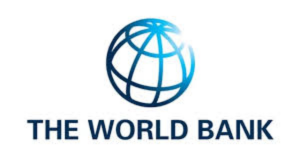Bangladesh has made major strides in reducing poverty over the past decade, but the pace of progress has slowed as growth has become less inclusive, according to a new World Bank report released on Tuesday.
The Bangladesh Poverty and Equity Assessment 2025shows that between 2010 and 2022, the country lifted 25 million people out of poverty and 9 million out of extreme poverty.
During the period, extreme poverty fell from 12.2 percent to 5.6 percent, while moderate poverty dropped from 37.1 percent to 18.7 percent. Improvements in access to electricity, education, and sanitation contributed to rising living standards.
Yet the report warns that nearly 62 million people—around one-third of the population—remain vulnerable to falling back into poverty if hit by illness, natural disasters or other unexpected shocks.
The World Bank notes that after 2016, Bangladesh’s growth pattern shifted and became less inclusive, with the benefits of income growth increasingly concentrated among wealthier households.
Rural areas continued to drive poverty reduction, supported largely by agriculture, but progress in urban areas slowed sharply. By 2022, one in every four poor Bangladeshis lived in a city.
“For years, Bangladesh has been known for its success in poverty reduction. But with a changing global context, severe climate vulnerabilities, and a slower rate of job creation, labor income has weakened,” said Jean Pesme, World Bank Division Director for Bangladesh and Bhutan.
“A business-as-usual approach will not accelerate poverty reduction. The fastest path to reducing poverty and ensuring the dignity of people is through job creation, particularly for youth, women, and vulnerable populations. A pro-poor, climate-resilient, and job-centric strategy will be essential to ensure inclusive and sustainable growth,” the World Bank official added.
The report points to stagnating job growth in manufacturing and a shift toward less productive sectors. Young people and women have been the most affected. One in five young women is unemployed, and one in four educated young women remains without work.
Outside Dhaka, urban job creation has slowed and women’s labor-force participation has fallen. Half of all young people aged 15 to 29 are employed in low-paying jobs, indicating widespread skills mismatches.
Migration continues to offer a pathway out of poverty for millions. Remittances—both domestic and international—have played an important role in reducing poverty and have benefited poorer households most significantly.
But the report cautions that domestic migrants often live in congested, poor-quality housing, while the high costs of overseas migration limit those opportunities mostly to better-off families.
Despite expansions in social assistance programs, the report finds that the country’s safety nets remain poorly targeted. In 2022, 35 percent of the richest families received social protection benefits, while half of the poorest families did not.
Subsidies also remain misdirected, with wealthier households receiving the bulk of benefits from electricity, fuel and fertilizer subsidies.
The assessment identifies four broad policy priorities for reducing poverty and narrowing inequality: strengthening the foundations for productive jobs, expanding opportunities for the poor and vulnerable, making markets work better for low-income producers through improved processing and business regulations, and building resilience through stronger fiscal systems and better-targeted social protection.
“Bangladesh has reduced regional disparities, particularly the East–West divide. But climate risks are exacerbating spatial disparities, particularly between rural and urban areas,” said Sergio Olivieri, World Bank Senior Economist and co-author of the report.
“Our poverty assessment shows that by adopting innovative policies, Bangladesh can restore and accelerate the pace of reducing poverty and boosting shared prosperity by improving connectivity, creating quality urban jobs, facilitating pro-poor value chains in agriculture, and making social protection effective,” the economist added.
The World Bank concludes that placing job creation—especially for women and young people—at the center of economic strategy will be critical to achieving more equitable and climate-resilient growth in the coming years.

